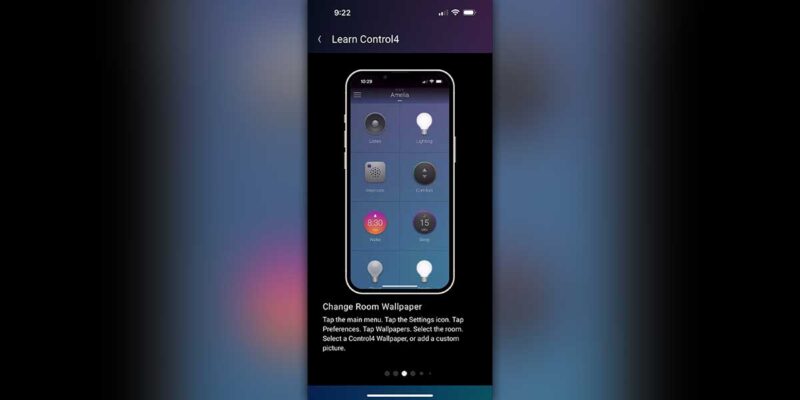InfoComm: Redefining AV as a Service
By Nermina Miller
Senior Technical Editor, InfoComm International

As organizations continue to adapt to digital-economy parameters and become Internet-scalable, location-aware and agile, the need for collaboration across space and time increases the demand for centralized technology monitoring and management. Customers are trying to avoid the headache of owning a depreciated asset or the technical risk of having to locally manage technology, therefore they’re outsourcing a growing number of technology management responsibilities and functions.
The idea of a “servicized” product offering is a concept that is at least 16 years old. A paper [PDF] submitted to the U.S. Environmental Protection Agency in 1999 by the Tellus Institute delineated three major components of such offerings that still sound fresh today and are worth revisiting:
- Cost control — Providing a leased product and product-based service rather than just an installed product
- Need for specialist skills — Acquiring a complex skillset that enables integration with new systems
- Product differentiation — Understanding local requirements and infrastructure for effective service delivery
What separates some service providers from others today is being able to use the data harvested from their systems and deliver the bundled value of low capital cost, high availability, improved performance and increased sustainability.
The pro AV industry has been providing post-install services for quite some time now. How is it being “servicized” further in the world of the Internet of Things (IoT)? How do AV service providers differentiate themselves in response to new business demands? And what challenges do they face in that effort?
Amazon of AV
For an AV service provider, standing out as a leader in the IoT era might mean a combination of two things. First, it’s taking an AV system beyond the hand-off and providing a pay-as-you-go service model, where the service provider employs software, cloud services, network providers and on-the-ground troops to continually manage and monitor that AV system — a model commonly known as managed services. Second, it’s using the information collected from the system, sensors and space usage to predict and avoid system failures, reduce energy consumption and increase space efficacy.
It turns out, some integrators are redefining themselves as the Amazon of managed AV services — designing the systems, apportioning pieces of the conferencing cloud, installing the equipment, monitoring the rooms through the cloud and employing local AV service staff dressed in the customer’s shirts to deploy the system and clear the helpdesk tickets.
“They put up a bridge, get it built, get the suitable Ethernet lines into the building, pay the monthly fee for those lines, get those lines from inside the building to the rooms that are going to be used, put videoconferencing codecs, install touchpanels in the conference rooms and make sure they run all the time,” says Crestron’s Technical and Sales Education Director Dave Silberstein.
A recent survey of 86 managed service providers with a median annual revenue of $1.5 million showed that nearly 30 percent experienced a revenue increase between 25 percent and 100 percent in 2014. Of the 11 types of managed services provided by respondents, remote monitoring and management accounted for 75 percent, software-as-a-service 41.4 percent and managed communications (including voice over IP) 39.4 percent. The numbers speak for themselves, but what is pro AV currently doing about the growth potential in managed services?
Integrators have just begun to realize the benefits of managed services, dialing into their clients’ rooms or technology and monitoring the operational capabilities. They’re investing in their own infrastructure, testing the services in house and setting up network operation centers. West Chester, Pa.-based Advanced AV has been utilizing such a monitoring center.
“System monitoring could be a Crestron solution, AMX, Cisco TMS [TelePresence Management Suite] or Polycom solution. We have the ability to dial into our clients’ rooms or dial into their technology and monitor those operational capabilities,” says Vice President of Sales John Greene.
And monitoring doesn’t have to be confined to a single site. An AV company could provide different models depending on the customer’s geographic scope. If a customer is a three-site company with four various-sized conference rooms per site, they’re not likely to invest tens of thousands of dollars into a 12-hour-day centralized monitoring center and staff it for level 1 and 2 support scheduling and preemption. But they might be willing to pay a monthly fee to a company that will do it.
An AV integrator can find a local AV company to build the rooms using identical software and equipment sets that can tie into the monitoring system. The local company can then provide tier 3 support and remove issues before the customer becomes aware of them.
“Once you become an AV integrator that offers managed services, that’s where remotely managing your environment becomes critical,” says Silberstein. “You really want to do it remotely so you can leverage everything that’s going on. And then you can have people that really work for the AV integrator walking around in company shirts and fixing the equipment.”
Clearly, under such a model, universities and corporate environments with hundreds of rooms may no longer have to employ staff to manage their AV systems. However, smaller managed services companies that sell to customers with fewer rooms can also deploy room-control products in the cloud and monitor their systems. Paul Zielie, AMX’s Enterprise Solutions Manager, predicts that customers and integrators of any size will benefit from managed services due to scalability.
“I think a lot of the managed services will come with those smaller organizations, especially the ones who have a tech-savvy workforce that expects the kind of platform that allows them optimal productivity,” says Zielie. “Having managed services in the cloud allows such a customer to leverage the scale among a service provider and outsourced services rather than having to build that platform themselves.”
Overcoming Barriers
Managed AV service providers are increasingly testing products, tools and delivery models that will allow them to respond to the customers’ new demands. Because a large number of products and services have to reside on the network and in the cloud, knowledge of the IT industry is critical to the AV industry’s survival in the managed services business. AV pros understand network policies and procedures a lot better than they used to. They are realizing the importance of understanding terms such as “high availability.” If you don’t know what those terms mean, the conversation with the customer’s IT staff ends.
“We’re under some strict SLAs [service level agreements] that provide chargebacks to the clients if services aren’t met or the clients don’t have the satisfaction level of greater than 99 percent,” says Greene. “In one case, we entered into a relationship that had five nines. On the IT side, that may mean that there is no downtime at any given point.”
Managed service providers see several things standing in the way of their realizing full growth potential. The provider survey lists a lack of internal sales skills to articulate services to customers as one of the major roadblocks to recurring revenue. AV integrators are learning that the key to success is being able to both speak the C-suite language and fully understand the deliverable.
“You cannot do ‘as-a-service’ and expect people who have been doing systems integration and selling product to grasp it the first time around,” says Greene. “Understanding how the recurring revenue works, describing it and selling it — all those functions are a struggle. But you move that entire conversation to the services side and that’s all they understand.”
Since the beginning of AV/IT convergence, integrators have struggled with interoperability, which may be on the upswing for teleconferencing platforms but does not fully extend to AV control systems, for instance. AV integrators protest the weak standardization among control systems and stunted transition to Internet-based protocols beyond unified communication and collaboration (UCC). They may be using many types of control system offerings but not be able to combine different systems.
AVI-SPL’s Collaboration Solutions Expert Dave Waldron, who crossed over from the technology sector earlier in his career, believes the AV industry needs to learn some lessons from the IT world about standardization and scalability. To make control standardization work, Waldron suggests manufacturers adopt standard protocols and communications interfaces such as hypertext transfer protocol (HTTP), secure socket layer (SSL) and simple network management protocol (SNMP) and make them available as part of their systems. Doing so could move the AV industry away from hybrid solutions and closer to having all of their services over the Internet.
“Why wouldn’t we lose all of the serial ports and go with IP control?” he asks. “If you go with standardized protocols, you could have a module system server somewhere within your environment that manages and controls all of these devices. That would drive this industry in a way we’ve never seen.”
To their credit, some manufacturers are partnering with others to figure out how their components can work together. Silberstein mentions their Integrated Partners Program.
“We went to the projector manufacturers and display manufacturers and we said ‘Hey, if you put this little code into your projector then when it’s on the network it can report directly to Room View or Fusion and the customer doesn’t even need to buy a Crestron control system — the projector by itself can report,'” he says.
“And if they do happen to have a Crestron control system, the Crestron control system can automatically discover it and control it without the programmer having to do magic modules. The end result is that there are over two thousand makes and models in the market today that support Crestron Connected. Other manufacturers have similar programs to connect their projectors and control,” adds Silberstein.
Getting Green
Managed AV services could be taken further than control of audio and video. Integration with, and management of, smart building systems seems like the next logical step. This is where that second part of the AV industry’s IoT influence kicks in — using data collected from sensors and equipment to create a greener environment.
“We can do lighting control, tie into temperature control and various things as far as scheduling management,” says Zielie. “You can have a meeting scheduled and say, ok if somebody schedules a meeting on a weekend, turn on the air conditioner in that zone and bring it down to 72 degrees before the meeting starts.”
“Even the smallest meeting space, where it’s literally just an HDMI connector and a monitor are brought in under management for power, occupancy, scheduling and everything else — that’s a major reason to bring in AV-as-a-Service,” he says.
Amazon began as an online bookstore. Would it be strange for a managed service provider to hire local HVAC, electrical, lighting or power contractors just like they do for local AV break-fix? But for pro AV, smart building service is still in a fledgling state.
“We have not been invited to the conversation about monitoring of other building systems,” says Greene. “I find it surprising because there’s a fair amount of capabilities that we’d fit in with perfectly.”
It’s not far-fetched to think that once all the barriers to entry are removed, the AV industry could stake a claim in the smart-control ecosystem. In some ways, pro AV’s foray into the Internet of Things is like a free dive. It’s about acquiring new skills, having confidence in your own knowledge, channeling it in new directions and applying counterforce in the face of obstacles. Are you taking the plunge?
This article was reprinted with permission from InfoComm and originally appeared here.





